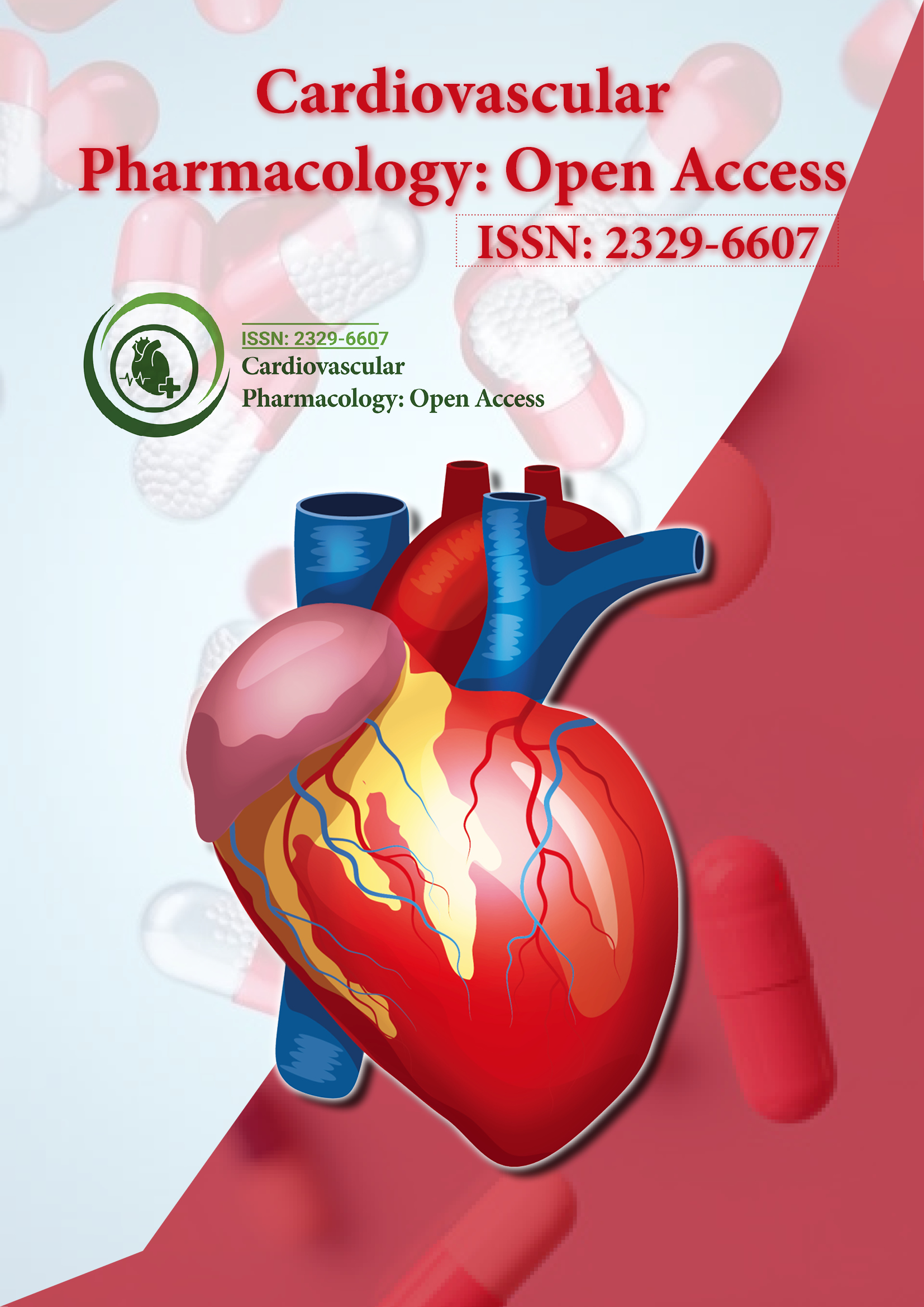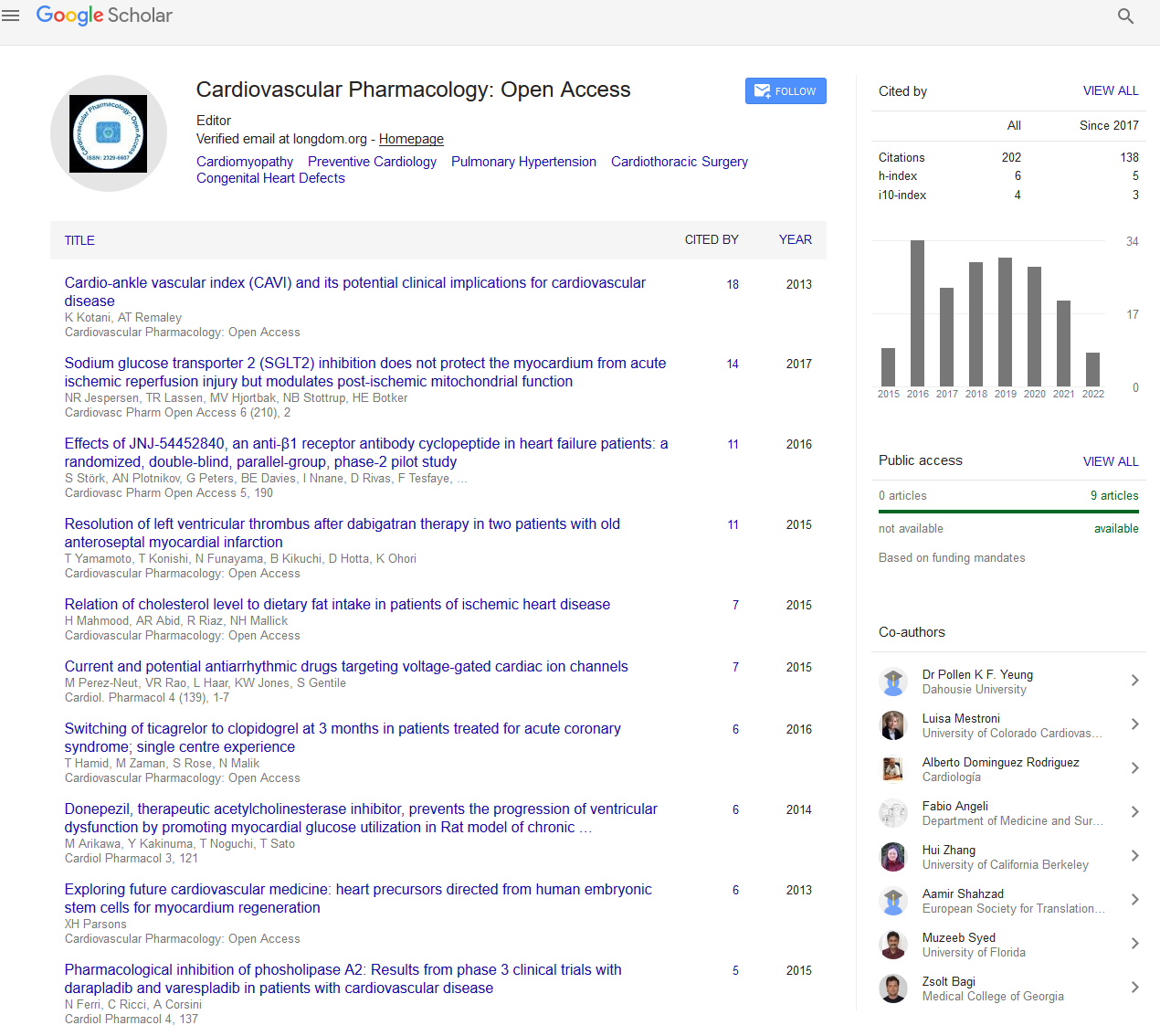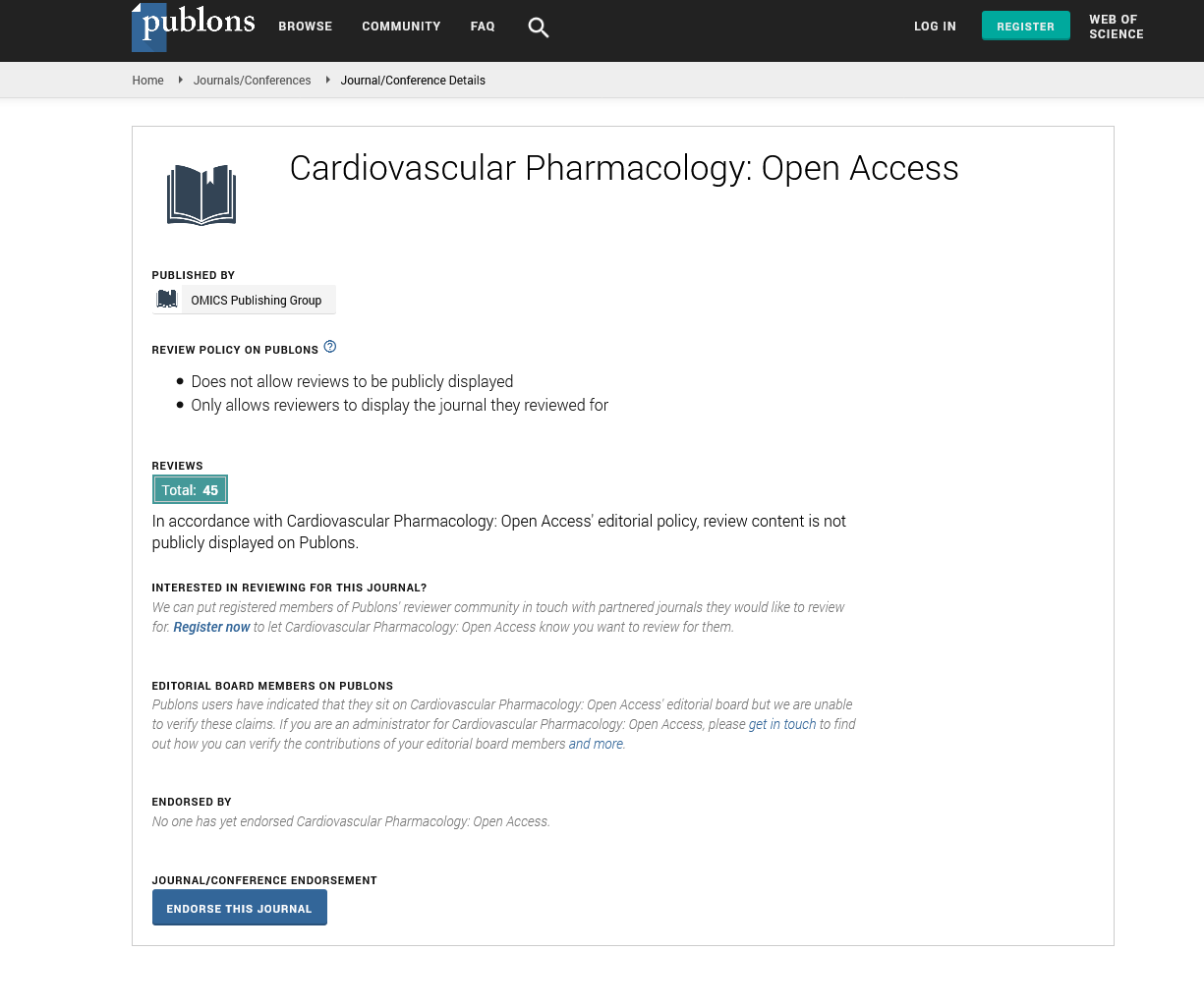Indexed In
- Open J Gate
- Cosmos IF
- RefSeek
- Hamdard University
- EBSCO A-Z
- OCLC- WorldCat
- Publons
- Geneva Foundation for Medical Education and Research
- Euro Pub
- Google Scholar
Useful Links
Share This Page
Journal Flyer

Open Access Journals
- Agri and Aquaculture
- Biochemistry
- Bioinformatics & Systems Biology
- Business & Management
- Chemistry
- Clinical Sciences
- Engineering
- Food & Nutrition
- General Science
- Genetics & Molecular Biology
- Immunology & Microbiology
- Medical Sciences
- Neuroscience & Psychology
- Nursing & Health Care
- Pharmaceutical Sciences
Commentary - (2025) Volume 14, Issue 1
Colchicine in Cardiovascular Therapy: Evidence, Mechanisms and Emerging Applications
Nathaniel Cruz*Received: 19-Feb-2025, Manuscript No. CPO-25-28925; Editor assigned: 21-Feb-2025, Pre QC No. CPO-25-28925 (PQ); Reviewed: 07-Mar-2025, QC No. CPO-25-28925; Revised: 14-Mar-2025, Manuscript No. CPO-25-28925 (R); Published: 21-Mar-2025, DOI: 10.35248/2329-6607.25.14.415
Description
Colchicine, a naturally occurring alkaloid extracted from Colchicum autumnale, has been traditionally used in the treatment of gout and familial Mediterranean fever. For centuries, it remained largely confined to rheumatological applications, until recent evidence redirected attention toward its remarkable anti-inflammatory potential in cardiovascular medicine. This shift comes at a time when the limitations of conventional lipid-lowering therapies and the residual inflammatory risk they leave behind have spurred interest in novel, inflammation-targeted interventions.
Inflammation is now understood to be a central factor in the initiation, progression and eventual rupture of atherosclerotic plaques. The CANTOS trial, which employed an IL-1β monoclonal antibody (canakinumab), was the first to establish a causative link between inflammation and cardiovascular events independent of lipid levels. However, the high cost and infection-related side effects of biologics pose challenges for widespread implementation. Enter colchicine: an affordable, orally administered agent with a long history of use, now being re-evaluated as an adjunct to standard cardiovascular therapies.
The anti-inflammatory action of colchicine is primarily mediated through inhibition of microtubule polymerization, which disrupts neutrophil motility and adhesion, inhibits the assembly of the NLRP3 inflammasome and subsequently reduces secretion of key inflammatory cytokines such as IL-1β and IL-18. This broad mechanism allows colchicine to target various stages of the inflammatory cascade involved in atherosclerosis and other cardiovascular pathologies.
Compelling evidence has emerged from several pivotal clinical trials. The COLCOT (Colchicine Cardiovascular Outcomes Trial) demonstrated that colchicine at a low dose (0.5 mg daily) significantly reduced the risk of Major Adverse Cardiovascular Events (MACE) in patients with a recent myocardial infarction. In parallel, the LoDoCo2 trial showed a similar benefit in patients with chronic coronary artery disease. These findings reinforced the hypothesis that targeting residual inflammatory risk with colchicine could lead to substantial improvements in clinical outcomes, particularly in secondary prevention settings.
Notably, colchicine’s benefits are not limited to coronary artery disease. Studies have also examined its efficacy in managing pericarditis, where it has become part of standard care and in reducing the recurrence of atrial fibrillation post-cardiac ablation. There is growing interest in evaluating colchicine for its role in heart failure, especially HFpEF, where inflammation and fibrosis are thought to contribute to disease pathogenesis. Ongoing trials are exploring these extended applications and results will likely determine colchicine’s future utility across the spectrum of cardiovascular disease.
Despite its therapeutic potential, colchicine is not without limitations. The most commonly reported adverse effect is gastrointestinal discomfort, including nausea and diarrhea. These are typically dose-dependent and manageable with dose adjustments. However, more serious concerns include potential drug-drug interactions, especially with medications that inhibit CYP3A4 or P-glycoprotein, which may elevate colchicine levels and increase the risk of toxicity. In some trials, a marginal increase in non-cardiovascular mortality has been observed, raising questions that warrant further investigation. Nonetheless, the overall safety profile of low-dose colchicine has been favorable in most cardiovascular trials to date.
Importantly, colchicine's mechanism differs from that of targeted biologics, as it provides a more generalized suppression of inflammation. This characteristic may serve as both strength and a limitation allowing broad anti-inflammatory effects, but potentially compromising host defenses with prolonged use. Hence, identifying patient populations that would benefit most from colchicine therapy without incurring undue risk remains a key research priority.
Another consideration is the timing and duration of colchicine treatment. Whether short-term therapy following acute coronary syndromes is sufficient or if prolonged administration is required for chronic atherosclerotic disease management remains uncertain. Additionally, biomarkers that reliably predict response to colchicine or indicate excessive immunosuppression would help clinicians optimize treatment.
In conclusion, colchicine represents a remarkable example of drug repurposing, demonstrating that an inexpensive and well-known agent can have far-reaching applications beyond its original indications. In the realm of cardiovascular medicine, it provides a potential strategy to address residual inflammatory risk—a major contributor to recurrent cardiovascular events. While more research is needed to clarify its long-term safety, mechanisms of action in various cardiovascular settings and role in primary prevention, current evidence supports the integration of colchicine into clinical practice for carefully selected patients. As we advance toward more personalized and inflammation-focused cardiovascular care, colchicine may emerge as a key component of next-generation therapeutic regimens.
Citation: Cruz N (2025). Colchicine in Cardiovascular Therapy: Evidence, Mechanisms and Emerging Applications. Cardiovasc Pharm. 14:415.
Copyright: © 2025 Cruz N. This is an open access article distributed under the terms of the Creative Commons Attribution License, which permits unrestricted use, distribution, and reproduction in any medium, provided the original author and source are credited.


